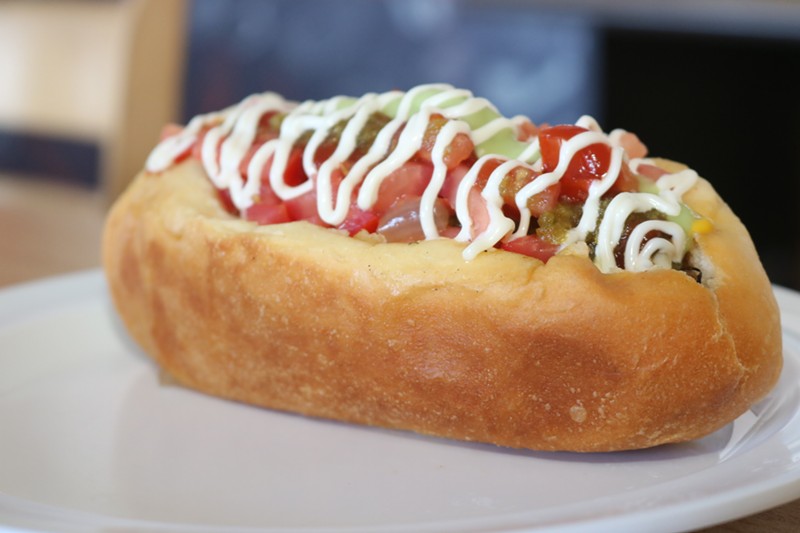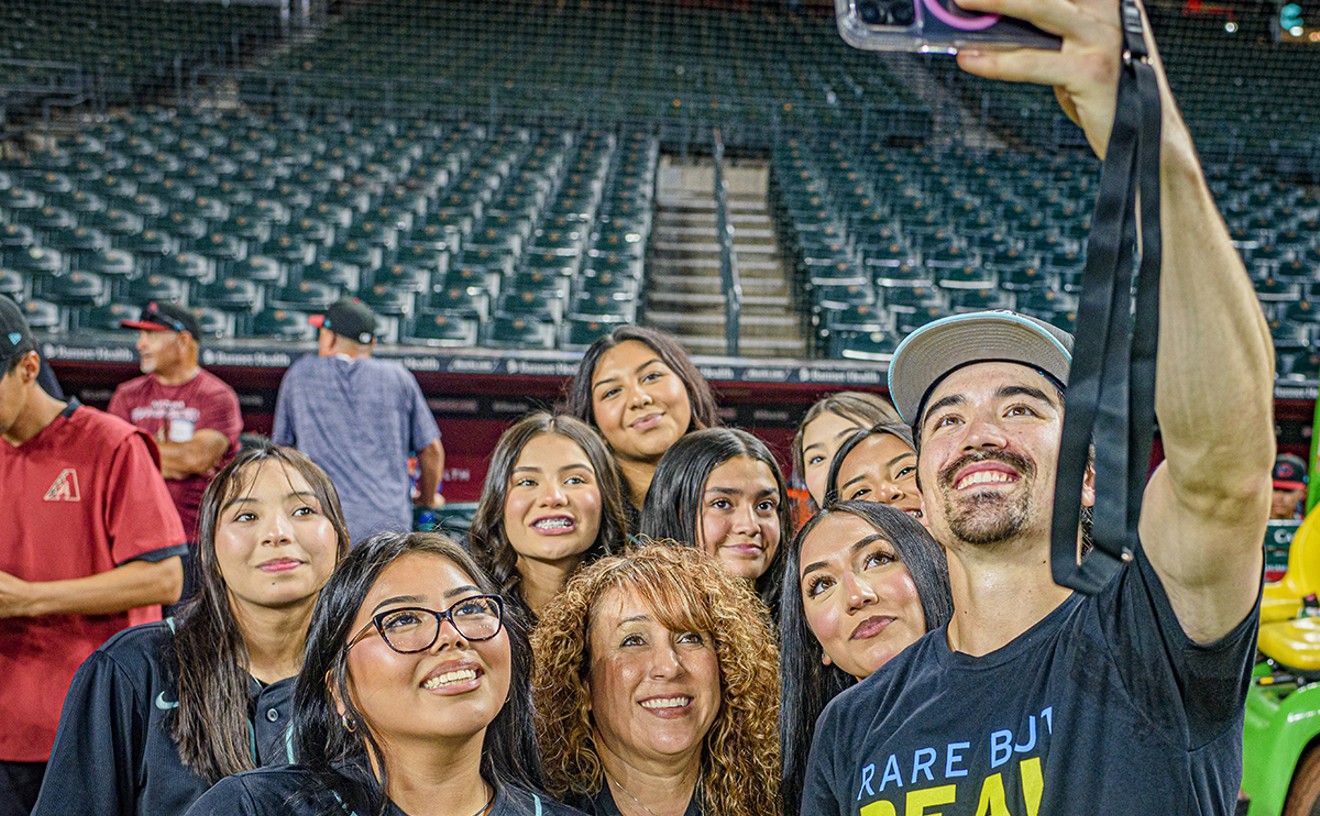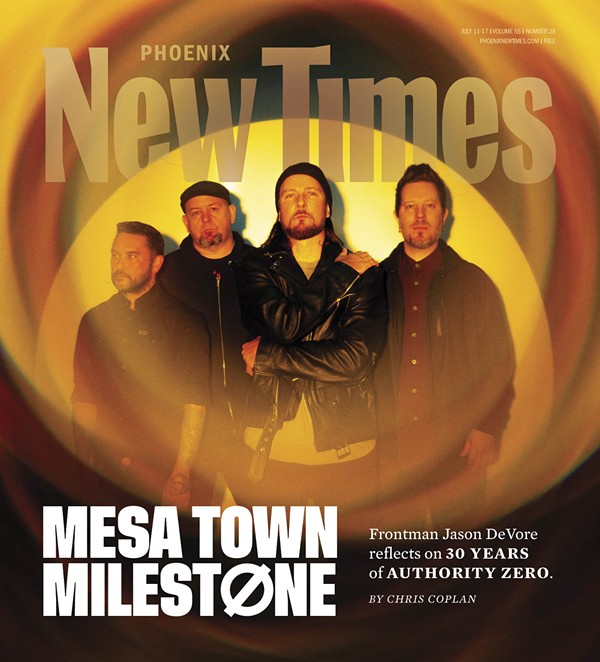Our love of sprawling Sonoran sunsets and serving bean-laden, bacon-wrapped brats in a bolillo is undeniable. But, as it turns out, there’s another thing local residents can agree on: Our dialect is special.
While we call ourselves Arizonans, four in five of us older than age 25 weren’t born in the state, and Arizona has fewer homegrown inhabitants than any other place in the U.S. except Nevada, Florida, and Washington, D.C.
The upshot of having such a diverse population is that it has helped forge a series of uniquely Arizonan words and phrases. Now, according to a new survey from the Writing Tips Institute, a media company based in Texas, a majority of Arizona residents included in a new poll — 57 percent — believe Arizonan should become an official dialect protected by law.
Arizona's Favorite Slang Words
When it comes to Arizona slang, here are a few that surveyors with the Writing Tips Institute identified:- Haboobs. Elsewhere, they’re called dust storms. But the intense and frequent sandy cyclones that sometimes ravage Arizona get their local name from the Arabic word for a similar type of storm found in the Sahara Desert.
- Swamp box. When it hits 120 degrees in the summer, a regular air conditioner won’t do the job for many in metro Phoenix. That’s why we instead opt for a swamp box, the slang word for an evaporative cooler. They use vapor compression to absorb large amounts of heat.
- Stravenues. These diagonal roads can only be found in Tucson. They run diagonally between streets and avenues.
- Monsoon/chubasco. Phoenicians aren’t too used to rain. Until mid-June rolls around, at least. Monsoon season lasts until the end of September, during which time warm summertime thunderstorms dump water on the Valley that fills our desert washes. These storms also sometimes are referred to as chubascos.
- Adobe. Adobe bricks, made of clay, silt, and sand, were first used 8,500 years ago in the Middle East. Officially, the word refers to the bricks themselves, but in Arizona, any building styled with clay can be called by this Spanish word.
- Sonoran dogs and raspado. No, they’re not hot dogs — they’re Sonoran dogs. The links are wrapped in bacon and topped with pinto beans and jalapeño salsa, usually served in a bolillo roll. They pair well with raspado, the local term for shaved ice that comes from the Spanish word raspar, meaning “to scrape.”
- Snowbird. The Audubon Society classifies snowbirds as birds seen chiefly in the winter. Arizonans use the term to describe the people they only see around town during the winter months.

Everyone else calls them dust storms. They're haboobs to Arizonans.
Alan Stark / Creative Commons
Desert Dialect
Some 3,000 people were polled across the U.S. Among Arizonans included in the survey, a majority is worried that phrases and slang unique to Arizona are at risk of dying out."Preserving local dialects is important not just for linguistic diversity but for cultural preservation, as well,” Shaun Connell, founder and CEO of Writing Tips Institute, said in a prepared statement. “Each state's dialect is a reflection of its history, community, and identity.”
But what exactly does the Arizonan dialect entail? According to Karen Adams, a linguistics professor at Arizona State University, the dialect is defined by a unique accent that borrows from Spanish and other regional American dialects, mixed with phrases born from Arizona’s geography and history.
“Some of our pronunciations are also found in Southern California because of California’s influence on Arizona,” Adams told Phoenix New Times. “It’s an area that is socially prominent in terms of being an American cultural center.”
Most Americans pronounce “caught” and “cot” quite differently, but not so much in Arizona, she pointed out. And in rural towns outside of Phoenix, folks tend to have a Southern accent, because most English speakers who settled in the area migrated from the Southeast.
“Other pronunciations come from the diversity of Indigenous languages and speakers of Chicano English,” Adams said.
Is The Arizonan Dialect At Risk?

Arizona State University linguistics professor Karen Adams the state's dialect borrows from Spanish and other regional American dialects.
Arizona State University
“It doesn’t mean that everybody in Arizona who lives in metro Phoenix or metro Tucson speaks like people who live in other large cities,” Adams said. “In reality, there is still a large amount of linguistic diversity in Arizona.”
For many in the Copper State, the Arizonan dialect is an important part of personal identity, according to the professor. “In Arizona and elsewhere, language is really important for us to single out who we are and what we value,” Adams said. “It’s an important part of creating an identity.”










